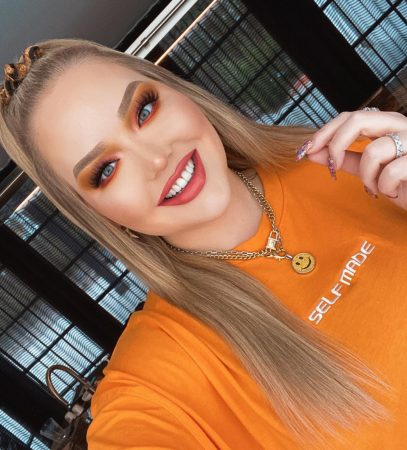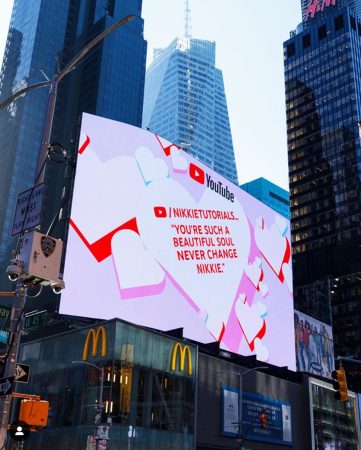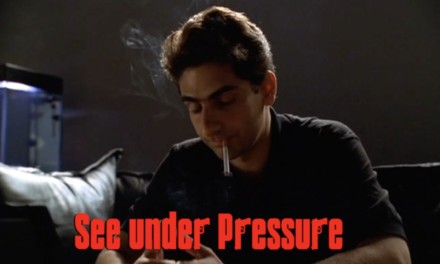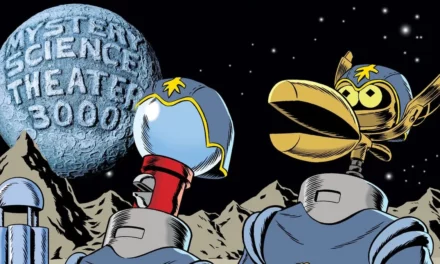Today I am here to share something with you that I’ve always wanted to share with you one day, but under my own circumstances. It looks like that chance has been taken away from me, so today I am taking back my own power.
– NikkieTutorials in her YouTube video ‘I’m Coming Out’, January 13, 2020
Television and connected cross-media content are a main source for stories about our reality. It was not the medium television or a specific television talk show that Nikkie de Jager – known worldwide by her YouTube channel name NikkieTutorials – chose as a platform to share her very personal story for the first time. She did not have to – after all, NikkieTutorials has her own YouTube platform with 13.2 million subscribers. Since starting with English-language make-up tutorials on YouTube way back in 2008, the Dutch make-up artist has gained worldwide recognition with videos such as ‘The Power of MAKEUP!’ (May 10, 2015). In her YouTube video simply titled ‘I’m Coming Out’ (January 13, 2020) [Video 1], Nikkie reached an audience of millions when she shared her own story of being born in the wrong body. She had made the choice to share this story herself, after being blackmailed and threatened that her identity would be exposed. Nikkie described in the video how making this part of her personal journey publicly known felt ‘scary’, but also ‘liberating’ and ‘freeing’. The video has currently been viewed more than 34 million times. In this blog, I reflect on NikkieTutorials’ coming-out video and its impact as a media event: a cross-media narrative of ‘the power of me’.
Video 1: NikkieTutorials’ ‘I’m Coming Out’ video. Source: NikkieTutorials’ YouTube channel, uploaded January 13, 2020, Source: YouTube.
NikkieTutorials’ coming-out video was no. 1 trending in 21 countries: in Australia, Belgium, Canada, Costa Rica, Germany, Denmark, Dominican Rep, Estonia, France, United Kingdom, Guatemala, Honduras, Ireland, Iceland, Luxembourg, Mexico, Nicaragua, the Netherlands, Panama, Puerto Rico, and the USA. Reflecting on the video’s impact, Dutch television critic Arjen Fortuin argued that: ‘The coming-out of Nikkie de Jager will go down in history as a milestone in the emancipation of transgender people, but it also marked the changing role of television’ (NRC Handelsblad, January 15, 2020, my translation). I argue that NikkieTutorials’ coming-out video can be further reflected on as a ‘media event’ in the age of platform culture (Ytreberg 2017; Couldry, Hepp and Krotz 2009; Katz and Liebes 2007; Dayan and Katz 1992), and television talk as a key discourse or ‘paratext’ (Gray 2010) around this event.

Fig. 1: NikkieTutorials’ Instagram feed, with pinned comment by Nikkie reading ‘she’s a happy girl 😇✨’. Source: nikkietutorials on Instagram, posted February 24, 2020
In this blog, I pay particular attention to the media event of NikkieTutorials’ video as a cross-media narrative: an audiovisual representation of ‘the power of me’ (see e.g. ‘I’m Coming Out’,’02’’12) across different screen cultures, from YouTube to television to Instagram and Snapchat. ‘Storytelling’ here takes the shape of NikkieTutorials as a content creator posting videos and images with descriptions and links, and connected pinned comments, to entertain and inform media users, on platforms such as YouTube, Instagram [see e.g. Fig. 1], Snapchat, Twitter and Facebook. Whilst television did not launch this particular story – NikkieTutorials’ own YouTube platform did – television talk did contribute in an important way to the travel of connected powerful conversations and meaning making, across screens and platforms (compare Elleström 2019; Balbi and Scaglioni 2014; Pearson and Smith 2014). As I have discussed elsewhere (in Hagedoorn 2018, p. 430), the widespread circulation of audiovisual materials provides something of a training ground for modern media users in the ‘platform society’ (Van Dijck et al. 2018), who as information ‘hunters and gatherers’ (Jenkins 2006) are becoming more and more used to collecting and assembling information from different platforms and screens [see e.g. Fig. 2] into logical overarching narratives for themselves. This heightened, cross-platform circulation of images and audiovisual materials today plays a fundamental role in how stories gain attention, opinions are formed, and meanings are created.

Fig. 2: YouTube’s ‘LoveNote’ for NikkieTutorials, Times Square screen on Valentine’s Day. Source: YouTube on Instagram, posted February 14, 2020
In this context, NikkieTutorials’ ‘I’m Coming Out’ video – its impact across different media such as television included – can be understood as a media event. Media events have been defined by Couldry et al. as ‘…certain situated, thickened, centring performances of mediated communication that are focused on a specific thematic core, cross different media products and reach a wide and diverse multiplicity of audiences and participants.’ (2009, p. 12) Such events are characterized by a focal story. At the centre of the ‘I’m Coming Out’ video as a media event, is how NikkieTutorials took control of her own narrative, demonstrating the power of herself and her own media channel. Whilst Nikkie did choose to appear on the American daytime television talk show The Ellen DeGeneres Show, to discuss her video, she did not appear in other talk shows at the height of the story – even though many media outlets sought after Nikkie as a guest, also in support of her story. As a famous Dutch YouTuber, Nikkie de Jager also did not appear in Dutch television talk shows when the story was trending.
NikkieTutorials’ ‘I’m Coming Out’ video is a strong symbol of how, even in 2020 and for a powerful and privileged individual such as Nikkie de Jager, it is not that easy to share such a story. From an emotional beginning, starting with a strained voice and clenched fists, over the course of the 17-minute video, Nikkie finds her power and owns her story. Her voice is calm when she addresses the people who did not respect her identity and wanted to leak her story, saying ‘this one’s for you’ whilst sticking up her middle finger to the camera. In Dutch national newspaper NRC Handelsblad, chairman of Transgender Netwerk Nederland [Transgender Network Netherlands] Brand Berghouwer argues how people are never obliged to tell anyone about their private life, and that it is a toxic idea that they would otherwise be found unreliable (January 17, 2020, my translation). The increased use of social media such as Facebook or YouTube as a vehicle for coming out was also reflected on by Justice Namaste in Wired (August 16, 2018). Namaste pointed to comedian Ellen DeGeneres’s coming out in 1997 in the US television sitcom Ellen (season 4, episodes 22-23) as an important originator of such cultural moments, and described how ‘when many LGBTQ people come out online, they’re not just coming out to their audience of strangers, they’re also coming out to at least some of their family and friends, and that comes with its own set of fears and concerns’ (ibid) regarding the complexities of blurring such private and public/online spheres.
In the Dutch television landscape, the impact of the coming-out video was that of a cross-media event, as it was a main topic of conversation on television, radio and podcasts, newspapers, online and social media. Images from NikkieTutorials’ video were screened in multiple Dutch television talk shows, such as Op1, De Wereld Draait Door and Jinek. Such main talk shows invited guests to reflect on the effect of the video, and the video importantly triggered connected conversations. It opened up a space for other people’s stories: about coming out, about being transgender, and the challenges for safety and acceptance. Conversations highlighted key social and cultural issues, such as the extent in which the worldwide acceptance of Nikkie is a given for transgenders. For instance, when discussing the impact on transgender people across the globe, stylist and creative director JeanPaul Paula argued in talk show Op1 (January 14, 2020) that ‘In many countries you are simply killed’ and ‘It is important that we not only embrace her [Nikkie], but all people who do not look like her and also are transgender – and who also try to participate in our society and are turned away’ (my translation, and see also Sedee 2020).
Video 2: In Op1, Jessie Maya, Arie Boomsma and JeanPaul Paula discuss what NikkieTutorials’ coming-out video means for transgender people worldwide with talk show hosts Giovanca Ostiana and Tijs van den Brink (EO). Source: Op1, January 14, 2020, Source: YouTube.
By means of such connected conversations on television, television talk (Tolson 2010) uncovers relevant representational issues and discussions. An example of such a key conversation is the ensuing discussion between talk show host Tijs van den Brink and YouTuber Jessie Maya (Pride Award winner for her videos following her sex surgery), when Van den Brink mistakenly refers to Nikkie de Jager as ‘him’ (in Op1, January 14, 2020, ‘11’’59) [Video 2]. Maya explains that she is not criticising Van den Brink, but that this incident is an example of what is made clear in NikkieTutorials’ video: Nikkie emphasising that she is not different (‘I am me – I am still Nikkie’), and her fear of being addressed or seen in a different way after her coming-out. This issue is also made visible in connected media commentary, from Nikkie de Jager speaking herself in a short video on Snapchat and Instagram about some people that have posted commentary under her videos addressing her as ‘him’, to negative commentary on social and online media about the video (see e.g. Bouyeure 2020). Such discourses point to larger debates, including the extent in which media like television and online media offer a safe space for sharing personal stories, and the responsibilities and politics of platforms (Cavalcante 2016; Gillespie et al. 2014; Gillespie 2010).
‘We don’t need labels (…) At the end of the day, I am me (…) Just like me, you get to write your own story, live your life, live it without any restrictions’ – NikkieTutorials in her YouTube video ‘I’m Coming Out’, January 13, 2020
Nikkie de Jager would appear at a later point on Dutch television, for instance in the talk show MolTalk (February 15, 2020), but only to discuss Wie is de Mol? [Who is the Mole?], a Dutch reality television game show in which Nikkie was herself a participant last season. She also made appearances to promote her role as the online host for the 2020 Eurovision Song Contest to be held in the Netherlands, for instance on the Netherlands’ longest-running prime time talk show, De Wereld Draait Door [The World Keeps on Turning] (February 11, 2020) [Video 3], a talk show which is scheduled every work day. In this programme, Nikkie is asked by the show’s host, Matthijs van Nieuwkerk, to take stock and reflect back on the impact of the coming-out video event. At this point in time, the video was posted online a few weeks ago. Nikkie emphasizes how she values both the positive reception of her story, and how almost every Dutch talk show paid attention not necessarily only to her own story, but to stories of transgender people.
Video 3: Nikkie de Jager appearance in Dutch prime time talk show De Wereld Draait Door. Source: De Wereld Draait Door, uploaded February 11, 2020, Source: YouTube.
Nikkie de Jager did choose to appear on the American daytime television talk show The Ellen DeGeneres Show to discuss her video at the height of her story’s trending. Due to the format of this daytime talk show in the comedy variety genre, Nikkie appears in an interview segment, the duration of which is approximately 6 minutes [Video 4]. Host Ellen DeGeneres introduces Nikkie and screens a portion of the video. DeGeneres makes time to reiterate that coming out is incredibly private and never an easy thing to do, and emphasizes the importance for as many people as possible to be represented on television. In the segment, Nikkie is given space to reiterate several points from her video, such as the support from her family, and that she hopes that her story will inspire a lot of trans people (‘little Nikkies’) out there. Nikkie is able to expand further on the fact that she has privilege, such as being able to start her transition at a younger age and that she looks cis, and emphasizes the importance of Ellen’s platform to get her message for acceptance across globally.
Video 4: Nikkie de Jager appearance in American daytime television talk show The Ellen DeGeneres Show. Source: The Ellen DeGeneres Show, uploaded January 22, 2020, Source: YouTube.
We can compare NikkieTutorials’ YouTube video to her appearance on the Ellen platform – and television as a time sensitive medium – on the levels of time, space and agency (see also Couldry and Hepp 2017). Reflecting on her own YouTube channel as a ‘safe space’, Nikkie de Jager describes her channel as the no. 1 space where she can be and is truly herself, where she can share her full story, and has all the time to talk about it (in ‘Responding To My Coming Out’, January 28, 2020) [Video 5]. In her appearance on De Wereld Draait Door (February 11, 2020), Nikkie characterized the US talk show environment as more ‘distant’ than her personal experience of Dutch talk shows.
In follow-up videos and images, Nikkie continues her narrative of ‘the power of me’. This is done through storytelling – on NikkieTutorials’ main YouTube channel (for instance in ‘Responding To My Coming Out’ and Nikkie reflecting on being back in her studio after filming the coming out video (in ‘Why Valentine’s Day SUCKS… & how to make it better!’, February 13, 2020, ‘3’’30). Such storytelling also occurs across paratexts, such as Nikkie using the platforms Snapchat and Instagram to share with her audience her reservations about going out after the video’s reception, but still making the active decision to do so. And this narrativization includes visual representational codes too, such as using a blue/pink background, lighting, make-up and even nail colour [Video 5 & Fig. 3]. In a more recent video, Nikkie also visibly owns her power by making a video about how she named herself (in ‘I Should’ve Given Myself A Different Name… FIRST LETTER Makeup Challenge!’, February 24, 2020), wearing a bright t-shirt with the words ‘SELF MADE’ [see also Fig. 1]. In her long career on YouTube, Nikkie de Jager has focused prominently on bringing her skills as a make-up artist to her viewers, but she has along the way decided to slowly open up more and more to her online audience on a personal level – whilst simultaneously reflecting on that this does not come easy to her (in videos such as ‘We need to talk about…’, October 23, 2019).
Video 5: NikkieTutorials’ ‘Responding To My Coming Out’ video. Source: NikkieTutorials’ YouTube channel, uploaded January 28, 2020, Source: YouTube.

Fig. 3: NikkieTutorials’ Instagram feed – a paratext promoting the above video. Source: nikkietutorials on Instagram, posted January 28, 2020
NikkieTutorials originated a strong representation of ‘the power of me’ across media – a ‘media event’ and a pivotal cultural moment for the representation of transgender people. The event also highlighted the role of the medium television and television talk as a storyteller (‘bard’) providing different spaces for related conversations, deeper reflection and connected social-cultural discussions – television is not necessarily only a ‘follower’ (Fortuin 2020) in the platform society. Rather, the medium played a crucial role in spreading Nikkie’s message further on both a national and international scale. This media event highlights the relevance of contemporary television studies research putting multi-platform practices and paratexts at the forefront – including reflections on the responsibilities of platforms, media users and content creators – in our interpretation and understanding of the narrativization of our reality.
Berber Hagedoorn (b.hagedoorn@rug.nl) is Assistant Professor Media Studies at the University of Groningen, the Netherlands. Her research interests revolve around audiovisual culture, creative reuse, and storytelling across platforms and screens. She received the 2018 Europeana Research Grant award for digital humanities research into Europe’s cultural heritage. Hagedoorn is the Vice-Chair of ECREA’s Television Studies section (European Communication Research and Education Association) and organizes cooperation for European research and education into television’s history and its future as a multi-platform storytelling practice. She has extensive experience in Media and Culture Studies and Digital Humanities through large-scale European and Dutch best practice projects on digital audiovisual heritage and cultural memory representation, including Europeana, VideoActive, EUscreen and CLARIAH. Hagedoorn has published in amongst others Journal of European Studies, Media and Communication, Critical Studies in Television, Continuum and VIEW. Her most recent publication is “Cultural Memory and Screen Culture: How Television and Cross-Media Productions Contribute to Cultural Memory” in Information Storage: A Multidisciplinary Perspective (eds. C. Große & R. Drechsler, Springer Verlag 2020).
References
Balbi, G. and Scaglioni, M. (eds.) (2014). Convergent Television(s). VIEW: Journal of European Television History and Culture, 3.6 [Special Issue]. https://viewjournal.eu/3/volume/3/issue/6/
Bouyeure, L. (2020). ‘Het werd pijnlijk duidelijk waarom Nikkie de Jager had gewacht met haar coming-out’, de Volkskrant, January 17, https://volkskrant.nl/columns-opinie/het-werd-pijnlijk-duidelijk-waarom-nikkie-de-jager-had-gewacht-met-haar-coming-out~bfb0fc49/
Cavalcante, A. (2016). ‘I Did It All Online:’ Transgender identity and the management of everyday life, Critical Studies in Media Communication, 33.1, 109-122, doi:10.1080/15295036.2015.1129065
Couldry, N. and Hepp, A. (2017). The Mediated Construction of Reality. Cambridge: Polity Press.
Couldry, N., Hepp, A. and Krotz, F. (2009). Media Events in a Global Age. London: Routledge.
Dayan, D. and Katz. E. (1992). Media Events: The Live Broadcasting of History. Cambridge: Harvard Univ. Press.
Elleström, L. (2019). Transmedial Narration: Narratives and Stories in Different Media. Palgrave Macmillan.
Fortuin, A. (2020). ‘Het verhaal van Nikkie de Jager draait om onafhankelijkheid’, NRC Handelsblad, January 15 https://nrc.nl/nieuws/2020/01/15/het-verhaal-van-nikkie-de-jager-draait-om-onafhankelijkheid-a3986861
Gillespie, T.L. (2010). The Politics of Platforms. New Media and Society, 12.3: 347-364.
Gillespie, T.L., Boczkowski, P. and Foot, K. (eds.). (2014). Media Technologies: Essays on Communication, Materiality, and Society. Cambridge: MIT Press.
Gray, J. (2010). Show Sold Separately: Promos, Spoilers, and other Media Paratexts. New York: NYU Press.
Jenkins, H. (2006). Confronting the challenges of a participatory culture (part six): Confessions of an aca-fan. The Official Weblog of Henry Jenkins, 26 October. http://henryjenkins.org/blog/2006/10/confronting_the_challenges_of_5.html
Katz, E. and Liebes, T. (2007). ‘No More Peace!’: How Disaster, Terror and War Have Upstaged Media Events. International Journal of Communication 1: 157-166.
Namaste, J. (2018) ‘The Ever-Evolving Art of the Coming-Out Video’, Wired, August 16, https://wired.com/story/youtube-coming-out-videos/
Pearson, R. and Smith, A.N. (2014). Storytelling in the Media Convergence Age: Exploring Screen Narratives. Basingstoke: Palgrave Macmillan.
Sedee, M. (2020) ‘Uit de kast komen’ is nog geen emancipatie’, NRC Handelsblad, January 17 https://nrc.nl/nieuws/2020/01/17/uit-de-kast-komen-is-nog-geen-emancipatie-a3987260
Tolson, A. (2001). Television Talk Shows: Discourse, Performance, Spectacle. Mahwah, N.J.: Lawrence Erlbaum.
Van Dijck, J., Poell, T. and De Waal, M. (2018). The Platform Society. Public Values in a Connective World. Oxford: Oxford Univ. Press.
Ytreberg, E. (2017). Towards a historical understanding of the media event. Media, Culture & Society, 39(3): 309-324. doi: 10.1177/0163443716643155






Fascinating read – informing me about a range of platforms and shows which are generally outside the areas I study. As such, I get to learn some new stuff – and that’s brilliant. Much appreciated! 🙂
All the best
Andrew